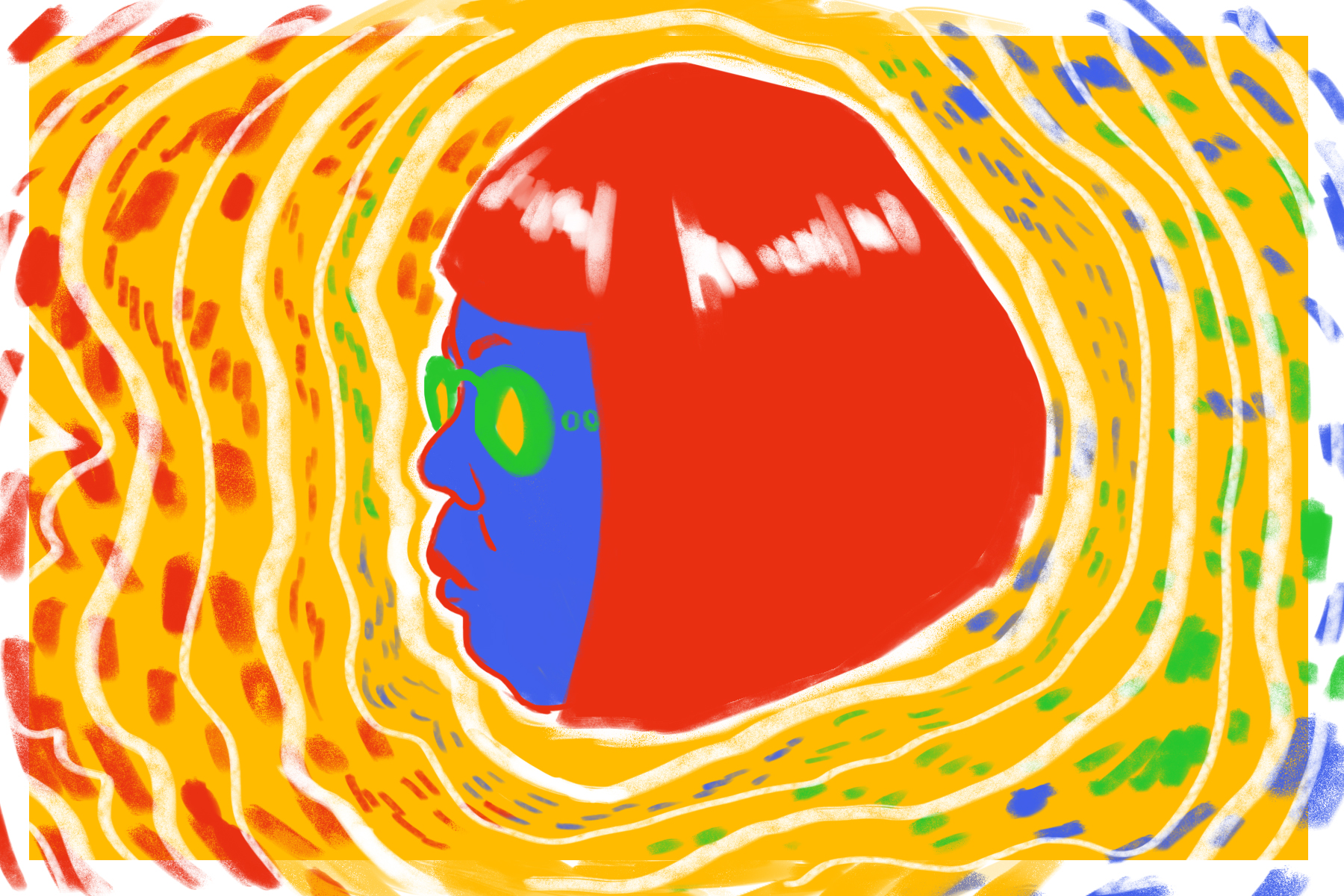Artist Yayoi Kusama was born in 1929 in Matsumoto, Japan. She discovered a passion for art at a young age, but was discouraged from pursuing it by her mother, a strict and abusive traditionalist, who instead pushed her to marry young and have children, like most young Japanese girls.
Her mother was under the assumption that her husband, Kusama’s father, was having an affair. She insisted that Kusama spy on him and his lover, which eventually fostered a deep-rooted aversion to sex for Kusama. Around the same time, she began experiencing visual hallucinations. The dense concentrations of light and circles would cloud her vision, but eventually they became the inspiration for her iconic polka dot wardrobe and work.
In 1957, driven by an undying need to practice art, Kusama sewed money into her kimono and set off for the United States in hopes of being able to showcase her work in a public sphere. The art scene in major cosmopolitan areas such as New York and Seattle were male-dominated at the time, so gaining entry into such an elite space posed an obstacle to Kusama. Even female art dealers were reluctant to take on Kusama for fear that she would dilute their reputation amongst others within the field.
After a series of rejections from various galleries and dealers around New York, Kusama attempted to take her own life. She felt that her work and ideas were being taken advantage of by her more successful, albeit being less creative, male counterparts.
After surviving her suicide attempt, she slowly began to regain self-confidence, working alongside a number of different galleries in the city, which eventually led to the first instillation of what would be her decades long “Infinity Mirrors” project. In 1993, Kusama was invited to participate in the Venice Biennale convention; she was its first Japanese solo artist. Her exhibition consisted of a “dazzling mirrored room filled with small pumpkin sculptures,” an image that would be molded and replicated as she progressed as an artist.
Equipped with newfound experience, connections and exposure, Kusama eventually returned to Japan to continue to practice art. She currently takes up a permanent residence at a local mental institution a couple blocks away from her studio.
The implications of Kusama’s childhood trauma and mental illness bleed into her work. Her otherworldly installations that seem to stretch into, well, infinity, beget the question of the individual’s place within the universe. Step inside one of these mirrored rooms and you’ll find yourself replicated into an endless distance. You are forced to confront the complicated and troubling nature of your existence, which occupies a known place within a larger unknown. Kusama’s multiple suicide attempts reflect her struggle with this question. Her mental illness and fear became a never-ending obsession, something that stretched as far as her eye could see, but she made something beautiful, shameless and captivating out of that fear.
Kusama reflected on her work to High Museum of Art, saying, “One day after gazing at a pattern of red flowers on the tablecloth, I looked up to see the ceiling, the windows, and the columns were plastered with the same red floral pattern. I saw the entire room, my entire body, and the entire universe covered with red flowers, and in that moment my soul was obliterated and was restored, restored to infinity, to eternal time and absolute peace.”
Her introduction to sex through spying on her father is also quite evident in her artistic expression. Her 1965 “Infinity Mirrors: Phalli’s Field” was the first taste of this scarring experience. Mirrors line the walls of the small room as a number of small white and red polka-dotted phallic cushions protrude from the floor. It’s warm, inviting and almost comical, a stark contrast to her jarring understanding of sex.
She uses phallic play in most of her work as a way to confront her fear. She is turning something inherently uncomfortable to her into something funny. You are invited to lie down and lay amongst the phallic flowers, to embrace them and to find comfort amongst them. They are no longer something to be feared, but something to find hilarity in. Jo Applin describes it as “abstract, psychotic and erotic, [as] it seems to embody what the 1960s were about while at the same time rejecting the prevailing aesthetics of the time.”
The now 89-year-old artist has found the bulk of her fame in her later years. While her work is certainly timeless, it has become resurgent in the past couple decades alongside the rise of social media. Sarah Boxer of The Atlantic wrote, “‘Infinity Mirrors’ offers a chance to capture the lonely existential experience of infinity and send it to others as a selfie.” It is participatory, and therefore Instagram-able. People wait in six-hour long lines for the 30 second opportunity to take a “mirror pic” inside the exquisite room.
Even though her artistic vision was born long before the advent of social media or Instagram stories, Kusama’s work resonates with a certain aesthetic that is typically fostered over social media. Everyone wants a chance to step inside one of those rooms and post it on their story.
However, as the art world continues its advance, it seems more and more that Kusama is leading its progress. Nowadays, museum and gallery-goers want enchanting exhibits that fully immerse them. People want an experience, they want something outside of just simply looking. “Infinity Mirrors” offers that, even if only for a few seconds. It’s a taste of the endless possibilities present in this universe — something shared amongst everyone.
Her installations are unforgettable experiences not just because of the bright colors, extraordinary objects and fantastic lights, but because of the question that lingers after you’re through with all of that: Who am I? What is my place in this expansive universe?
Kusama’s ability to ask that question is why her influence will be, well, infinite.
















